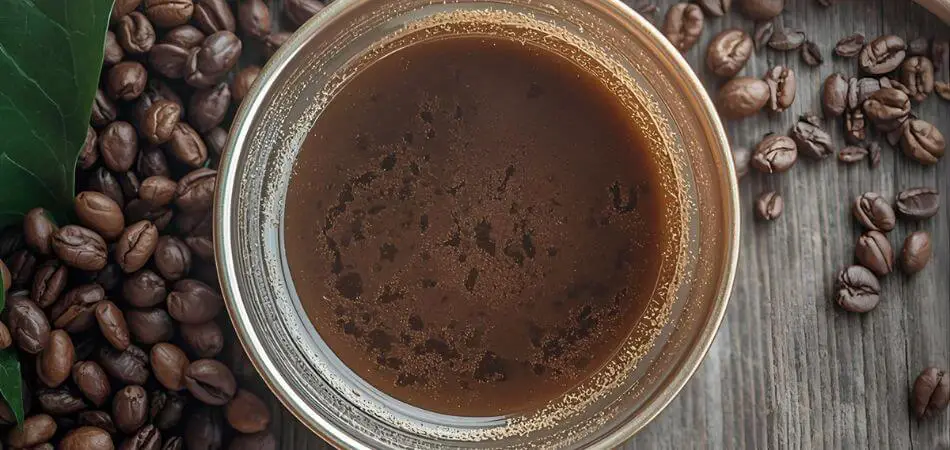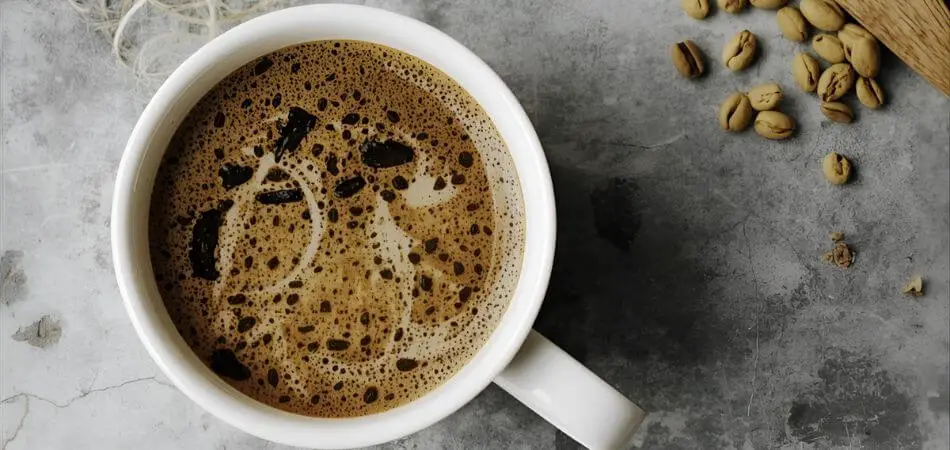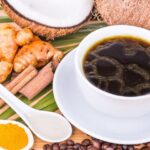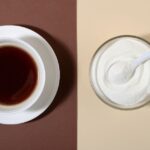Vietnamese Coffee Nutrition: Calories, Carbs, and Caffeine
Rich, bold, and sweetened with condensed milk—Vietnamese coffee is more than just a drink; it’s an experience. ☕️✨
Hi! If you love that creamy, slightly caramel cup of cà phê sữa đá, you’ve probably wondered: what’s actually in my cup? This article digs into vietnamese coffee nutrition in a clear, friendly way — calories, sugar, caffeine, and the health pros & cons. I’ll walk you step-by-step so you can enjoy your coffee and know what it means for your health.
What this post will cover (quick peek):
- ✅ What makes Vietnamese coffee different from other brews
- ✅ A clear nutritional breakdown (calories, sugar, fat, caffeine)
- ✅ Health benefits and risks
- ✅ Healthier swaps and practical tips
- ✅ Easy FAQs you can use when ordering or making at home
Ready? Let’s start by looking at what makes Vietnamese coffee special.

Nutritional Breakdown of Vietnamese Coffee 🍵
Okay, now let’s get into the heart of Vietnamese coffee nutrition — the numbers that show what’s really in your cup.
The nutrition depends a lot on how you drink it. Black coffee, condensed milk coffee, and egg coffee are all very different in calories, sugar, and fat.
🔹 Calories in Vietnamese Coffee
- Black (Cà phê đen) → almost zero calories (~5 per cup).
- With condensed milk (Cà phê sữa đá) → 120–180 calories per serving (mainly from sugar and fat in the milk).
- Egg coffee (Cà phê trứng) → 200–250 calories or more (because of egg yolk + sugar + condensed milk).
🔹 Sugar Content
Condensed milk is very sweet — about 20–25g sugar per serving.
- Black coffee: 0g sugar
- With condensed milk: 20–25g sugar
- Egg coffee: 20–30g sugar
(For context: WHO recommends adults limit added sugar to about 25g daily — so one cà phê sữa đá could use up your whole day’s allowance!) ⚠️
🔹 Fat Content
- Black coffee: 0g fat
- With condensed milk: 3–6g fat (from milk solids)
- Egg coffee: 8–12g fat (egg yolk + milk)
🔹 Caffeine Content ☕️💥
Because Vietnamese coffee uses Robusta beans, it naturally contains 100–200 mg caffeine per serving, depending on brew strength.
- That’s more caffeine than a regular drip coffee (80–120 mg)
- Comparable to, or even stronger than, an espresso shot (about 63 mg per shot, but usually consumed in multiples).
📊 Quick Nutrition Table
| Type of Vietnamese Coffee | Calories | Sugar (g) | Fat (g) | Caffeine (mg) |
|---|---|---|---|---|
| Black (Cà phê đen) | ~5 | 0 | 0 | 100–200 |
| With condensed milk (Cà phê sữa đá) | 120–180 | 20–25 | 3–6 | 100–200 |
| Egg coffee (Cà phê trứng) | 200–250 | 20–30 | 8–12 | 100–200 |
👉 Takeaway:
- If you’re watching calories or sugar, black Vietnamese coffee is your friend.
- Condensed milk makes it indulgent but calorie-dense.
- Egg coffee is more like a dessert in a cup. 🍮

Caffeine Content in Vietnamese Coffee ⚡☕
One of the hottest questions around Vietnamese coffee nutrition is: “Is it stronger than other coffees?” Let’s break it down.
🔹 Why Vietnamese Coffee Packs a Punch
- Robusta beans naturally contain almost twice the caffeine of Arabica beans.
- A typical phin-brewed cup has around 100–200 mg of caffeine (depending on coffee-to-water ratio).
- Since the serving is small but concentrated, it often feels stronger than a big cup of drip coffee.
🔹 Vietnamese Coffee vs Other Coffees
Here’s a quick caffeine comparison:
| Coffee Type | Serving Size | Caffeine (mg) |
|---|---|---|
| Vietnamese coffee (phin, Robusta) | 1 cup (120 ml) | 100–200 |
| Espresso (Arabica) | 1 shot (30 ml) | 63 |
| Americano | 1 cup (240 ml) | 80–120 |
| Regular drip coffee | 1 cup (240 ml) | 80–120 |
| Latte (Arabica espresso base) | 1 cup (240 ml) | 60–100 |
⚠️ Tip: Stick to 1–2 cups a day if you’re caffeine-sensitive. Since condensed milk already adds sugar, doubling up too often can also add extra calories.
Health Benefits of Vietnamese Coffee 🌿☕
Now that we know the calories, sugar, fat, and caffeine, let’s explore the health perks of sipping Vietnamese coffee — yes, there are real benefits!
🔹 1) Packed with Antioxidants ✨
- Coffee beans, especially Robusta, are rich in antioxidants like chlorogenic acid.
- Antioxidants help fight free radicals, supporting overall health and potentially reducing the risk of some chronic diseases.
- Tip: The slower phin brew extracts more antioxidants than quick-brewed coffee.
🔹 2) Boosts Energy & Alertness ⚡
- Thanks to higher caffeine content, Vietnamese coffee can:
- Improve focus and concentration
- Increase mental alertness
- Enhance reaction times
Perfect for mornings or mid-day slumps! 🕒
🔹 3) May Aid Metabolism & Fat Burning 🔥
- Caffeine naturally stimulates metabolism, increasing calorie burning slightly.
- This can be helpful if you enjoy it in moderation without extra sugar or calories.
🔹 4) Positive Mood & Mental Benefits 😊
- Drinking coffee triggers dopamine and serotonin release, which can boost mood.
- The slow sipping experience of phin coffee also adds a mindful, relaxing ritual — great for stress relief.
🔹 5) Cultural & Mindful Experience 🌏
- Enjoying Vietnamese coffee isn’t just about taste — it’s about slowing down, savoring, and connecting with a rich tradition.
- Mindful drinking can improve emotional wellbeing and enhance the overall coffee experience.
💡 Quick Takeaway:
- Moderate consumption (1–2 cups daily) can give you energy, antioxidants, and mood benefits.
- Choosing black coffee or less-sweetened versions maximizes health perks.

Potential Downsides of Vietnamese Coffee ⚠️☕
Even though Vietnamese coffee has plenty of benefits, it’s important to know the risks and things to watch out for — especially if you drink it often.
🔹 1) High Sugar & Calories 🍬
- Cà phê sữa đá (with condensed milk) contains 120–180 calories and 20–25g sugar per cup.
- Daily consumption with sugar can:
- Lead to weight gain
- Spike blood sugar levels
- Increase the risk of diabetes or insulin resistance
🔹 2) High Caffeine Content ⚡
- Robusta beans → 100–200 mg caffeine per cup
- Overconsumption can cause:
- Jitters or anxiety 😰
- Insomnia 🌙
- Increased heart rate or palpitations ❤️🔥
🔹 3) Fat from Egg Coffee & Condensed Milk 🥚🥛
- Egg coffee can have 8–12g fat per cup, mostly saturated.
- Regular consumption may impact cholesterol levels if combined with a high-fat diet.
🔹 4) Portion & Frequency Matters 📏
- Small, mindful servings are best.
- Drinking multiple sweetened Vietnamese coffees a day increases sugar, fat, and caffeine intake quickly.
💡 Quick Tip:
- Opt for black Vietnamese coffee (Cà phê đen) or reduce condensed milk.
- Limit to 1–2 cups daily for maximum health benefit without excess calories or caffeine.
Vietnamese Coffee vs. Other Coffees ☕️📊
Curious how Vietnamese coffee nutrition compares to other popular coffee drinks? Let’s break it down so you know what you’re sipping.
🔹 Quick Comparison Table
| Coffee Type | Calories | Sugar (g) | Fat (g) | Caffeine (mg) | Notes |
|---|---|---|---|---|---|
| Black Vietnamese (Cà phê đen) | ~5 | 0 | 0 | 100–200 | Strong, concentrated, zero sugar |
| Vietnamese with condensed milk (Cà phê sữa đá) | 120–180 | 20–25 | 3–6 | 100–200 | Sweet & creamy |
| Egg coffee (Cà phê trứng) | 200–250 | 20–30 | 8–12 | 100–200 | Dessert-like, high calories |
| Espresso (single shot) | 3 | 0 | 0 | 63 | Small, intense caffeine |
| Americano | 5–10 | 0 | 0 | 80–120 | Diluted espresso, lower caffeine per volume |
| Latte (240ml) | 120–150 | 10–12 | 4–6 | 60–100 | Milk-heavy, moderate calories |
| Iced Coffee (sweetened) | 140–200 | 20–30 | 2–4 | 80–120 | Similar to cà phê sữa đá but often less concentrated |
FAQs About Vietnamese Coffee Nutrition ❓☕
Here are some common questions people ask about Vietnamese coffee nutrition — answered in a friendly, easy-to-understand way.
Is Vietnamese coffee stronger than espresso?
Yes! Because it uses Robusta beans, a small cup of Vietnamese coffee can have 100–200 mg of caffeine, which is often more than a single espresso shot.
Tip: Strength varies depending on brew concentration.
Can I drink Vietnamese coffee daily?
Moderation is key. 1–2 cups per day is generally fine for most people.
Stick to black coffee if you want high caffeine without extra sugar or calories.
Is it good for weight loss?
Black Vietnamese coffee (Cà phê đen) → low-calorie and metabolism-boosting.
Sweetened versions → high in sugar & calories, which may hinder weight loss.
✅ Tip: Opt foYes! Egg coffee (Cà phê trứng) contains extra fat and calories from egg yolk + condensed milk.
It’s more of a dessert-style coffee than a regular drink.r less condensed milk or plant-based milk for a healthier version.
How much sugar is in a typical Vietnamese coffee?
Cà phê sữa đá → ~20–25g sugar per cup
Egg coffee → 20–30g sugar
Black coffee → 0g sugar
Conclusion 🎯☕
Vietnamese coffee is bold, flavorful, and culturally rich, but like any treat, its health impact depends on how you prepare and enjoy it.







